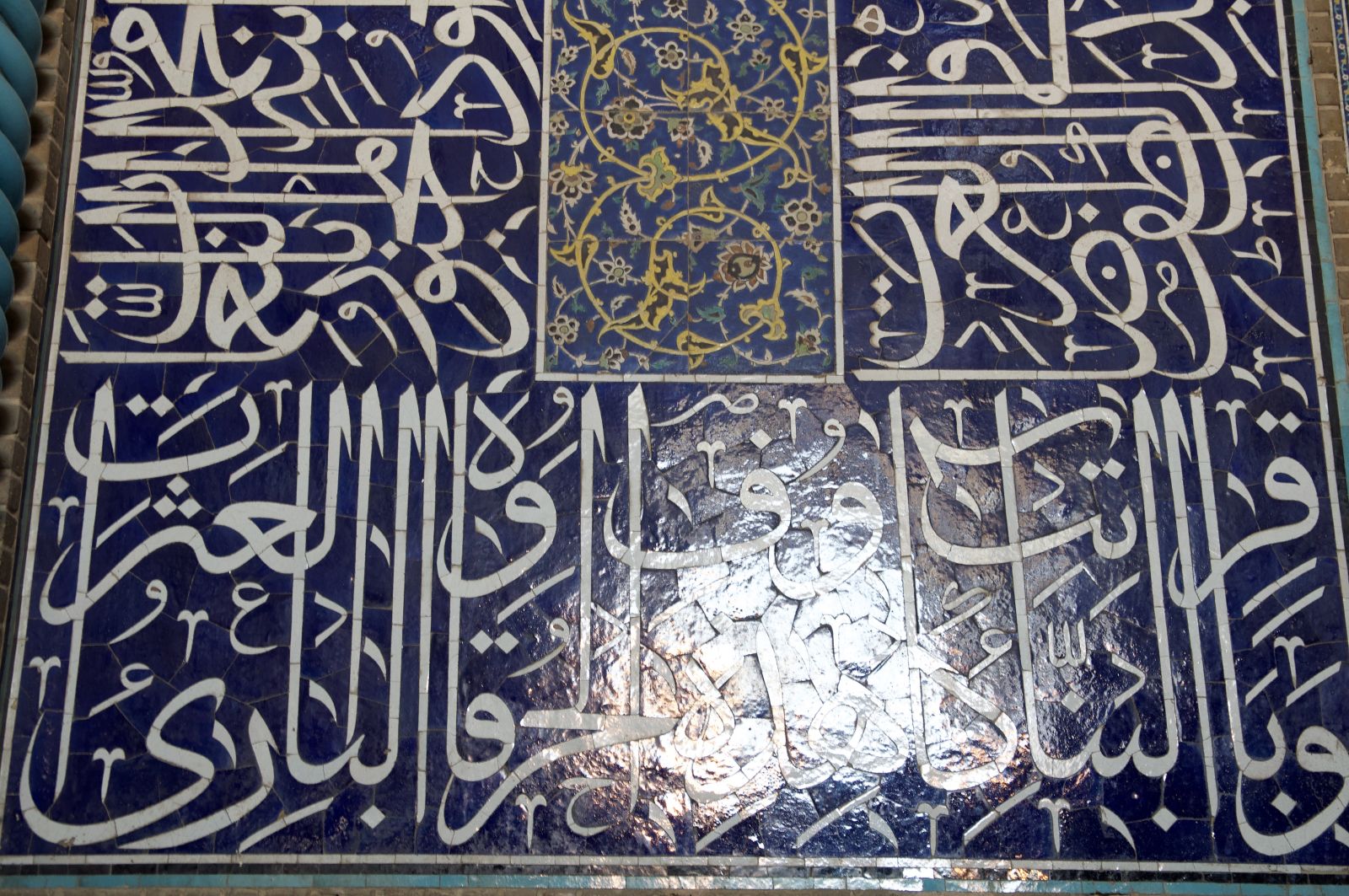Forschung
The Shaken Tree and Ruined Fruits: Representations of Gardens in the Architectural and Textual Cultures of Safavid Iran
Mahroo Moosavi

Shaykh Lutfullah Mosque, 1602-1619, Isfahan, prayer hall, south wall. Photo by Mahroo Moosavi.
Looking at the evolution of Persian poetry from the 10th to the 17th century gives insight on possibly different approaches towards the idea of ‘garden’ in different periods. Poets such as Firdawsī (940-1019 or 1025 AD), the composer of the Shāhnāma [the book of kings], the national epic of Iran, tended to depict senses of nature, garden [bāgh], or mythical battles, as well as exaggerated eulogies and rational instructions. Firdawsī uses the notion of harmony with nature as an important theme of the Shāhnāma. From the 12th century, poets such as Sanāī (1080-1131 AD), ‘Aṭṭār-i Nishābūrī (1145-1221 AD), Jalāl al-Dīn Muḥammad-i Balkhī (1207-1273 AD), and Ḥāfiẓ (1327-1390 AD), too, create intense scenes from the green nature. However, in many instances, such scenes are less physical and corporeal and more like shadows from the metaphysical realm from which the human is considered to be separated.
From the 16th and 17th centuries and in the Isfahani style of poetry, the style popular in Iran and later - through different variations – in the broader Persianate world, there is another shift in ontological aspects of poetry. Isfahani style poets do not relieve the anxiety of their readers by referring them to an eternal unworldly domain in which they will joyfully live forever, taking refuge from the cruelty of the material world. Ṣā’ib (1608-1676), amongst the most important poets of this style, in some couplets, refers to the beauty of the “green meadow” of this material world. However, he immediately disturbs the beauty of the scene by warning the reader not to be joyous, as it will not last long.
This shift in perspective from the 10th to the 17th century Persian poetry is in the manners by which the perception of the notion of ‘real’ physical garden alters from full joy to a type of joy that is accompanied by sorrow and nostalgia towards the Garden of Eden, and later to a sorrow that seeks no metaphysical cure, in the Isfahani poetry. Considering these, in an intertextual analysis of the histories of poetry and art, an important part of this research project includes investigations of the architectonic and artistic representations of garden and what it may constitute (such as trees, leaves, flowers, and fruits) in the religious architecture of the Safavids – starting from the royal chapel mosque of Shaykh Lutfullah in Isfahan (1602-1619) and expanding on the other less known buildings (and other forms of artistic production too) - to show that the turn towards materiality may not be exclusive to the poetry literature and may possibly also find its context in the architecture and arts of the period, specifically in Isfahan, the capital city of the Shi‘i state of the Safavids (1501-1722).
This project is part of the Research and Fellowship Program 4A Laboratory: Art Histories, Archaeologies, Anthropologies, Aesthetics, a cooperation between the Kunsthistorisches Institut in Florenz – Max-Planck-Institut and the Stiftung Preußischer Kulturbesitz.


